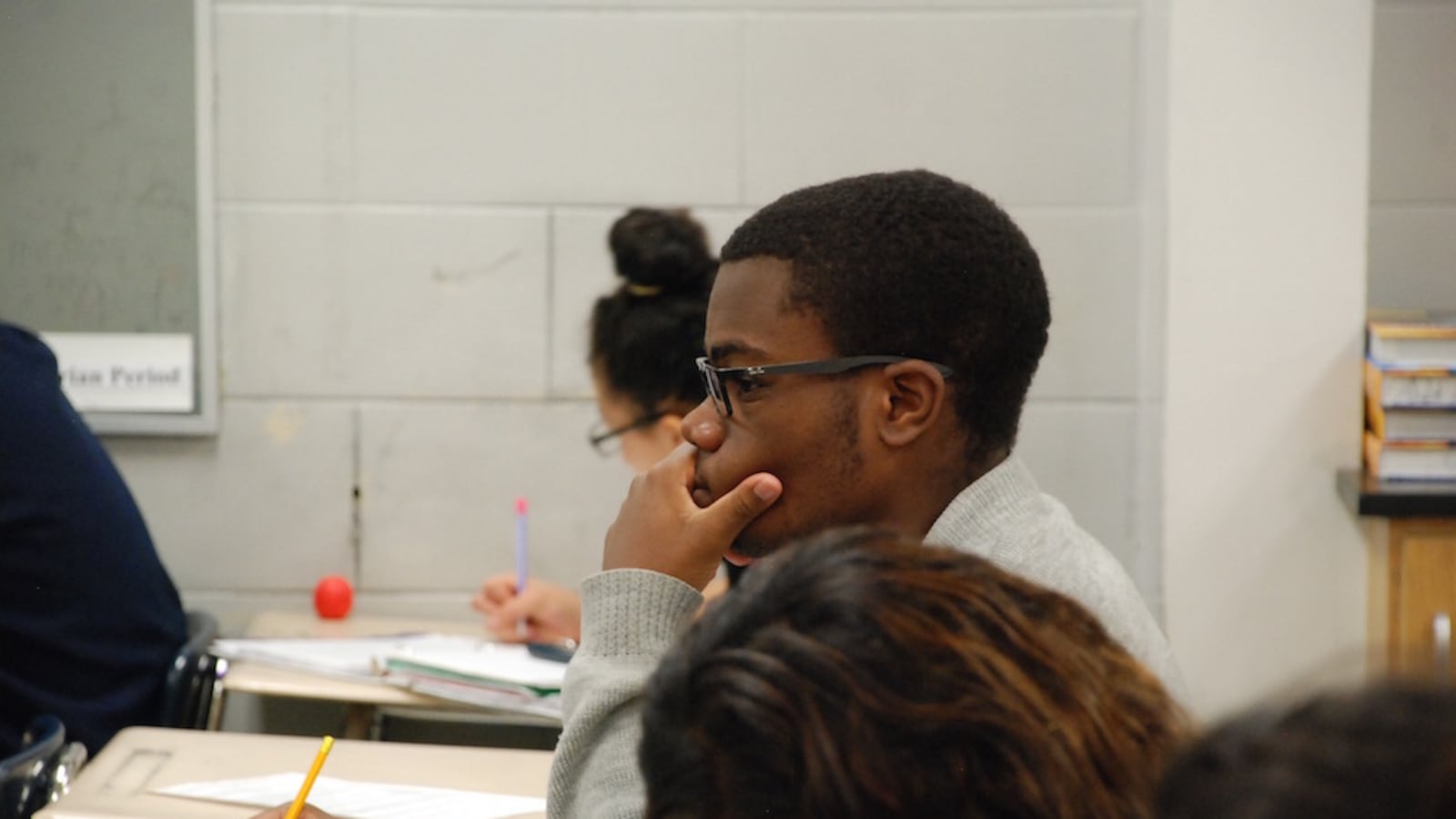Nearly half a year after district officials laid out a plan for changes at Aurora Central High School, at least one major focus of reform is not yet in place despite an aggressive timeline the district spelled out in the plan approved by the state.
The school is one of five low performing schools that Aurora Public Schools grouped into an innovation zone, granting each school autonomy from various rules and policies so they can try different improvement strategies. Aurora Central’s plans focused on adopting a so-called competency-based learning model, which does away with traditional grade levels based on age and instead groups and advances students through levels based on what they know.
Officials say the plan included so many pieces that some changes took priority over others.
“Any plan we implement is only going to be as strong as how we implement it,” said Lamont Browne, executive director of Aurora Public Schools’ innovation zone schools. “One of our core pillars for the innovation zone is investing in people, so that’s where we started in the summer before the school year began.”
The innovation plan for Aurora Central — the only traditional high school in the innovation zone — included a timeline to start trying a competency-based model starting with ninth graders and adding one grade level at a time. An entire section in the plan covered the need for, and the details of, the competency based plan that would “provide flexibility in the way that credit can be earned,” “provide students with personalized learning opportunities,” and increase engagement, “because the content is relevant to each student and tailored to their unique needs.”
“We are confident we can assemble a core set of strong, committee, and driven staff that would be willing and motivated to pilot this approach with our 9th grade for the 2016-2017 school year,” district officials stated in the plan.
The work was to start over the summer with teachers and educators meeting to align the competencies and determine if the resources and tests available were enough. Those meetings started, Browne said, but weren’t completed. Many teachers were new and needed more training.
“We didn’t anticipate having that many new teachers,” Browne said.
District officials say they are still researching the model and whether it is the right fit for the school. In the meantime, other changes are being made including some that were part of the plan and some that weren’t.
“We are working very hard to implement the plan, but more importantly to improve the schools,” Browne said.
Aurora Central’s innovation plan could be under scrutiny soon as the state gets ready to decide on sanctions for schools, including Aurora Central, that have recorded five years of low state ratings. Among the options, state officials could recommend the school for closure, or turn over management to a third party.
The state could also approve an innovation plan in place of the more drastic sanctions, giving the school more time to show improvement while it makes the changes.
Exactly how those plans would be reviewed to determine if they should be given time to show improvement, and how they would be monitored as schools work on the changes, is still not clear.
Peter Sherman, executive director for school and district performance at the Colorado Department of Education, said that his staff created a rubric that they used to look at Aurora Central’s innovation plan before it was approved by the state.
“We knew we were going to have innovation plans that come forward as accountability pathways and we knew we would need to look at those innovation plans through a different lens, so we created a rubric that sort of looks at it as a dramatic turnaround plan,” Sherman said. “We were trying to be proactive. Everyone at CDE thought their plan was good. We all can get behind it.”
However, Sherman later clarified that the earlier approval of the plan was not a sign that it was without faults. Before the state board approval, education department officials provided feedback that was critical of the plan, including concerns about how the school’s leadership would help put the new learning model in place and about the timeline for the “large number of initiatives.”
Browne said district officials are still not sure if Aurora Central’s innovation plan will be presented to the state as an accountability plan to avoid other state sanctions.
In the meantime as officials try improving the schools, the innovation zone team has an advisory group that includes teachers and school leaders meeting biweekly to constantly re-assess the needs of the schools in the innovation zone and prioritize the changes they make.
Included in the work that is happening at Central, Browne highlighted adjustments to teacher training days, training for school leadership teams through the nonprofit Relay Graduate School of Education, and programs to help ninth graders transitioning to high school including a pilot where a middle school counselor from Boston K-8 school is traveling to Central once a week to keep track of students coming from that school.
“We feel very confident in the adjustments we have been making,” Browne said. “But we have a long time before we’re satisfied. The amount of growth that is necessary is not going to happen overnight.”
This story has been updated to add more context about Peter Sherman’s comments.

